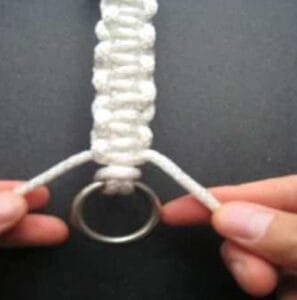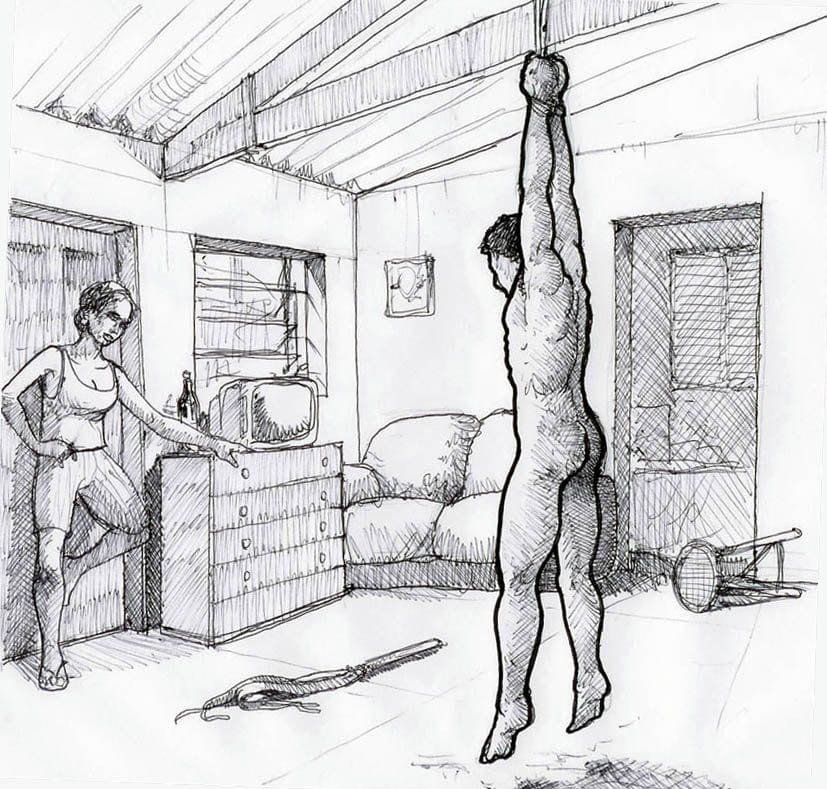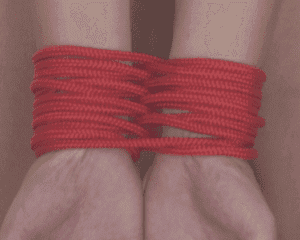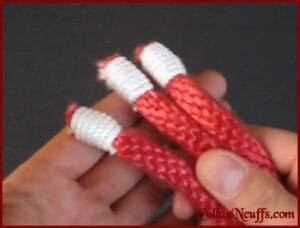Solomons Bar

The Solomon bar also called a Cobra Stitch and a Portuguese Sinnet, this knot is used as a military cord and pervasively by hemp necklace and bracelet weavers. Understanding the Solomon Bar The Solomon bar, also known as a cobra…

For All Your Femdom Needs

For All Your Femdom Needs
Master bondage techniques for safe and confident Femdom play. Learn methods, safety tips, and creative ways to enhance control and consensual restraint.

The Solomon bar also called a Cobra Stitch and a Portuguese Sinnet, this knot is used as a military cord and pervasively by hemp necklace and bracelet weavers. Understanding the Solomon Bar The Solomon bar, also known as a cobra…

Learn the art of tying of a suspension ring with the Knotty Boys in this engaging tutorial. Perfect for beginners and seasoned pros, their step-by-step instructions make knot tying both educational and fun. Impress your friends with your new skill and get ready for your next outdoor adventure! Join the Knotty Boys on YouTube and explore the exciting world of knot tying today.

Discover the fascinating world of bondage with our gentle introduction tailored for beginners. Explore the rich history of bondage practices, focusing on femdom techniques, while prioritizing safety. Learn essential safety tips, proper techniques, and the allure behind bondage experiences. This guide offers insights into the emotional trust and excitement involved, making it ideal for newcomers. Download our free 64-page PDF filled with expert tips and tricks to start your bondage journey safely and enjoyably.

How to Dye Rope For Bondage Play. In this video JD of Two KB shows how to dye your rope to get the beautiful colored rope you see them use from time to time.

Now this is not exactly a article on how to do construction for suspension rigging for Femdom bondage, but this is more of what you should NOT do…First off, one of the most common things I see and makes me cringe every time I see it, is when I see people using things for semi or full suspension that they should not be using!

Suspension bondage is a form of sexual bondage often used in Femdom where a bound submissive or slave is hung from one or more overhead suspension points. Suspension bondage is considered to carry a higher risk than other forms of sexual bondage. In the words of one noted practitioner:

One of the most interesting BDSM plays remains self-bondagewhen you restrain yourself with the help of ropes or other devices for a certain period of time. Those who practice self-bondage have a good opportunity to practice restraining techniques and immovability for a long period.

Discover the empowering world of Femdom self bondage. This unique practice combines domination and submission, allowing individuals to explore their fantasies safely. Learn about the personal growth, self-discovery, and excitement that comes from engaging in femdom self bondage, along with essential safety tips to enhance your experience. Dive into the journey of embracing your sensuality while understanding your limits, and enjoy the thrill of exploring power dynamics in a secure environment.

whipping rope ends has never been easier. How to Whip the ends of bondage rope to stop them fraying or becoming unraveled.
Some times with Femdom play, ropes can become sweaty and grimmy, grease builds up on them making them a challenge to work with.. your ropes can washed, and laundered with careful attention.Learn all you need to know on bondage rope washing! we got you